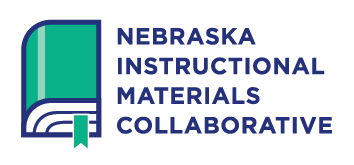Navigating the ELA Instructional Materials Selection Process
Selecting instructional materials is one of the most critical decisions a district will make. Finding instructional materials that are aligned to Nebraska’s College and Career Ready Standards for English Language Arts and that meet the needs of your district can be overwhelming, particularly when examining a crowded marketplace. It can be even more overwhelming for Nebraska districts as they try to determine if materials aligned to Common Core State Standards are also aligned to Nebraska’s ELA Standards.
The steps below are designed to help districts prioritize time while maximizing choice. Through a clearly defined selection process, districts are able to determine how strongly instructional materials for English Language Arts are aligned to Nebraska’s ELA standards and how the materials support the instructional shifts. Additionally, the process highlights where the district will need to provide additional support in order to ensure a strong implementation of the materials.
How to Use this Guide
The following steps draw from a number of resources including the Nebraska Instructional Materials Collaborative, EdReports’ Adoption Steps, Instruction Partners’ Curriculum Support Guide, and the work of the Nebraska Instructional Materials Professional Learning Innovation Network Fellowship.
While the following key actions and considerations are not exhaustive, they can be adapted to meet local needs as they navigate selection, adoption, and implementation stages of high-quality instructional materials for English Language Arts. The considerations contain links to tools and resources that will provide additional support to ensure the process is thoughtfully planned, transparent, and well-documented. As a starting point, districts are encouraged to carefully review the ELA Bridge document. The bridge document should be used in conjunction with EdReports reviews. The document serves as a bridge between the EdReports reviews and the Nebraska standards, and it also describes features of high-quality instructional materials.
Phase 1: Instructional Materials Selection
| Key Actions | Considerations
|
| I.1 Develop your district lens.
In this step, the goal is to establish a district-wide instructional vision for English Language Arts. |
|
| I.2 Identify local needs and priorities.
District and school leaders will develop a plan for reviewing and selecting materials. |
|
| I.3 Consider alignment.
The adoption committee will explore how the high-quality materials selected for further review may align with other ELA programs in use—foundational skills and/or intervention programs, screening, diagnostic and progress monitoring assessments, and core materials in use at other grade bands and within other content areas.
|
|
| I.4 Establish your process.
District and school leaders will develop a plan for reviewing and selecting materials. |
|
| I.5 Know and winnow your choices.
This step involves taking stock of the highly-rated English Language Arts materials available in the marketplace. |
|
| I.6 Investigate the materials
In this step, teams prepare to systematically evaluate a narrowed list of selections. |
|
| I.7 Develop an equity lens.
This step is essential for determining how high-quality ELA materials will meet the needs of diverse learners. |
|
| I.8 Make a decision.
Teams will make a final selection and prepare for launch and implementation phases. |
|
Phase II: Planning for Implementation
|
II.1 Prepare to launch. In this step, initial logistical decisions such as purchase, distribution, and professional learning are made. |
|
| II.2 Understand the design and demands of your materials.
In this step, the focus is on the design elements of the newly adopted ELA materials (e.g. units, lessons, overall scope and sequence, norms and routines, structures, formative and summative assessments) and how they will inform ongoing professional learning. |
|
| II.3 Continue to plan and provide professional learning.
In this step, professional learning plans are designed and refined to address learning needs of all stakeholders.
|
|
| II.4 Plan for observation.
This step involves developing a plan for observing the implementation of materials in classroom practice. |
|
| II.5 Plan for assessment and grading.
This step requires consideration of current practices and policies related to grading and assessment. |
|
Phase III: Professional Learning & Progress Monitoring
|
III.1 Work the plan and gather data. In this phase, the plan developed in Phase II is enacted by observing successes and challenges and listening to feedback related to effectively supporting teachers.
|
|
| III.2 Adjust the plan.
The goal of this step is to examine progress toward established goals, identify key successes, and problem-solve significant challenges. After analyzing the data, the team will adjust the plan for the next phases of implementation work.
|
|
| III.3 Annually reset.
The goal of this key action is to reflect on the implementation, celebrate successes, identify areas for growth, and define work for the following year of implementation.
|
|
